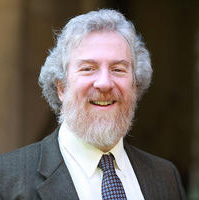“Light and Dark, Peace and . . . ?”

Many regular shul-goers are familiar with the two blessings that precede the Shema’ in the morning service (whether on a weekday, Shabbat, or Festival). The first (Yotzer) addresses God’s role in the natural cycles of creation and the physical world, and the second (Ahavah Rabbah) speaks of God’s love for Israel, manifested in the gift of Torah. After the opening blessing formula, Yotzer continues, “yotzer or u-vorei choshech, oseh shalom u-vorei et ha-kol” (God forms light and creates darkness, makes peace and creates everything; Siddur Sim Shalom for Shabbat, 107). The text has a poetic balance and engages with familiar metaphors; it is no surprise to learn that this line is based upon Isaiah, as much of the text of the siddur is based upon biblical sources and allusions.
In this case, consulting the source in Isaiah brings us to consider what I think of as a “subversive” aspect of the text of the siddur. A close reading of the line as found in the siddur might raise an eyebrow. There are two phrases, one of which presents a clear pair of opposites, “light and darkness,” yet the second phrase avoids the use of an opposing pair of metaphors, speaking of “peace and everything.” We know that biblical syntax engages heavily with parallelism, and this avoidance of an opposite for peace is surprising. Looking at the original source, we find that Isaiah (45:7) in fact uses the structure of parallelism to make a bold theological assertion. Isaiah writes that God is “yotzer or u-vorei choshech, oseh shalom u-vorei ara” (God forms light and creates darkness, makes peace and creates evil). Rabbi Reuven Hammer notes in his Or Hadash commentary (ad loc) that “Isaiah was stressing that there is only one Creator, not two (as taught by Persian religion). Therefore he ascribed everything that exists to God, even woe (evil).” The image of God as the creator of evil is far from comfortable; the Rabbis of the Talmud are of course aware of the altered text in the siddur, and they attribute the change to a desire for “lishna me’illya” (more elegant or exalted phrasing).
This point is instructive at several levels. First of all, in a number of debates and reflections about contemporary liturgy, we find assertions from a wide variety of perspectives that we do not change biblical texts and precedent.” But of course we do, and this example shows clearly that problematic elements of a biblical text were changed by the Sages without any (discernable) challenge being raised as to the permissibility of doing this. More surprising to me is the extent to which this “sanitization” of Isaiah has been perpetuated so widely in modernity. In our age of evolving and even “radical” theology, when we are so conscious of the extent to which there is inexplicable evil in the world, that so many times bad things happen to good people, might not the original stark message of Isaiah speak with clarity to us? It may be a troubling and harsh clarity—but perhaps, as Heschel asserted in “No Religion Is an Island,” it is the role of liturgy to be troubling, to be “subversive.”
I am aware of only one modern siddur that turns to the original of Isaiah. Magisterial, beautiful, and challenging, The Book of Blessings by Marcia Falk invites us to reengage with the radical voice of the ancient prophet, albeit structured in the language and context of contemporary feminist liturgy (464):
N’varekh et eyn hahayim, m’kor hahoshekh v’ha’or
M’kor hashleymut vehatohu
M’kor hatov vehara, m’kor kol y’tzirah
Let us bless the source of life, source of darkness and light
Heart of harmony and chaos, creativity and creation
As always, I am interested in hearing comments and reflections on these thoughts about prayer and liturgy. You may reach me at sabarth@jtsa.edu.



